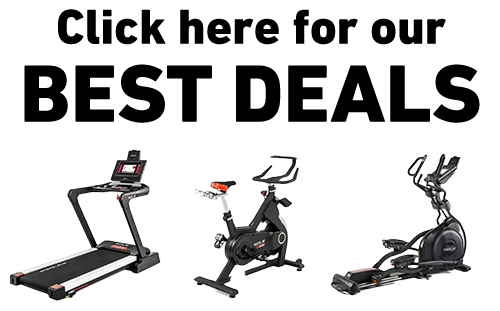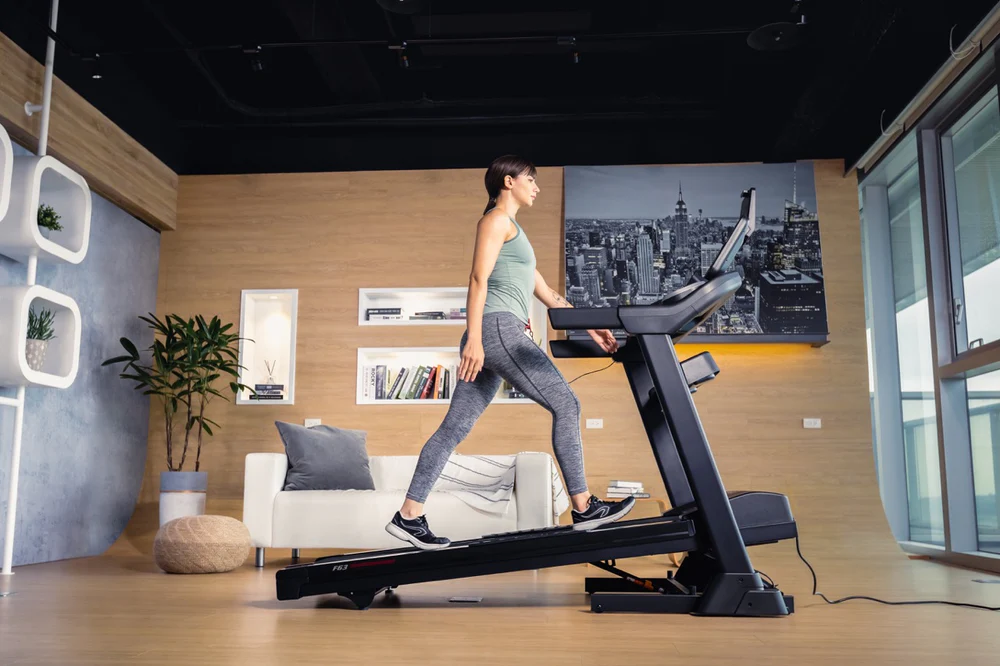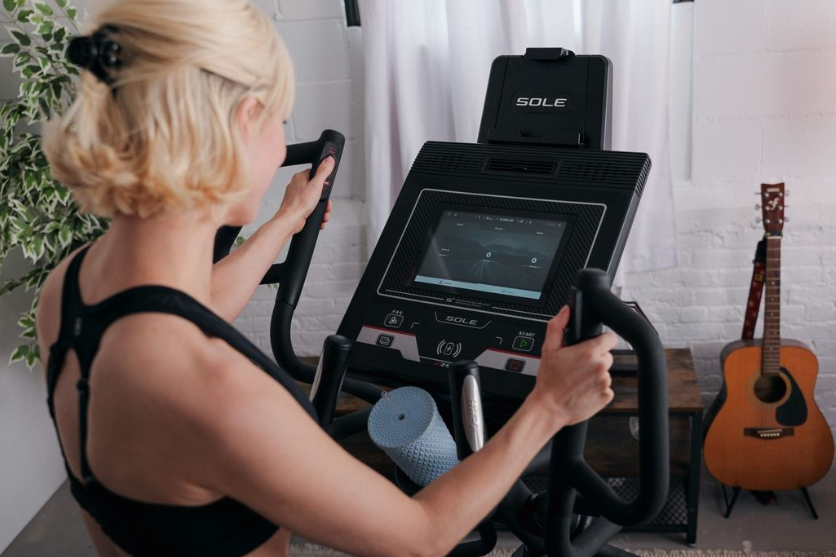Key Takeaways
- Treadmill running provides a cushioned surface that can reduce knee impact.
- Running outside offers natural terrain which can improve stability and strength.
- SOLE treadmills allow for customizable incline, which can be gentler on your knees.
- Weather conditions and environmental factors play a significant role in outdoor running.
- Proper footwear and running mechanics are crucial for knee health regardless of the running surface.
Treadmill vs Running Outside: Which Is Better for Your Knees?
Your knees are vital to your running routine, and how you treat them can make a world of difference. Running, whether on a treadmill or outside, places stress on your knees - and you should manage this stress to avoid injuries and prolong your running career. Many runners wonder which is better for their knees: the treadmill or the great outdoors. Let’s find out!
|
At SOLE Fitness, we're proud to offer the best treadmills for your home or gym. These machines are crafted to meet the highest standards of quality and performance, ensuring they are ideal for anyone - from fitness novices to seasoned athletes. Featured Product SOLE Treadmills: Starting at $1,199.99, SOLE treadmills excel in ergonomic design, durability, and value. Equipped with advanced cushioning to minimize joint impact, powerful, quiet motors, and wide running surfaces, they suit any fitness level. |
Quick Comparison: Treadmill vs Running Outside
Before we start learning how treadmill and running outside differ from each other, let’s check out a quick comparison between the two:
|
Comparison Factors |
Running on Treadmill |
Running Outside |
|
Surface |
Flat, controlled surface |
Varied terrain (pavement, trails, grass) |
|
Weather Conditions |
Climate-controlled |
Affected by weather (rain, heat, cold) |
|
Pace Control |
Easy to set and maintain pace |
Natural variations in pace due to terrain and fatigue |
|
Impact on Joints |
Generally lower impact due to cushioning |
Higher impact, especially on hard surfaces |
|
Environmental Stimuli |
Limited (screen, controlled environment) |
Dynamic (scenery, sounds, fresh air) |
|
Caloric Burn |
Slightly lower due to less variability |
Potentially higher due to wind resistance and varied terrain |
|
Motivation |
May require more mental effort to stay engaged |
Often more motivating due to changing scenery and fresh air |
|
Safety |
Generally safer (controlled environment) |
Potential hazards (traffic, uneven surfaces) |
|
Accessibility |
Requires access to a gym or home equipment |
Requires outdoor space, but can be done anywhere |
|
Social Interaction |
Typically solitary unless in a gym setting |
Opportunities for social interaction (running clubs, groups) |
Impact on Knees: Treadmill Running
Cushioned Surface
One of the most significant advantages of treadmill running is the cushioned surface. Treadmills like those from SOLE are built with shock absorption features such as the Cushion Flex Whisper Deck that can reduce the impact on your knees. This is particularly beneficial for those who are prone to knee injuries or joint issues or are recovering from one.
Controlled Environment
Running on a treadmill provides a controlled environment - so you don't have to worry about uneven terrain, potholes, or slippery surfaces. This can be beneficial for those who have knee issues, as it minimizes the risk of sudden movements that could cause injury.
For instance, you can run at a steady pace without the fear of tripping over an unexpected obstacle (because trail running is great but does require experience, and experience often comes with its own long streak of injuries - you probably don’t want that!).

Customizable Incline
Another great feature of treadmills is the ability to customize the incline. Running on an incline can strengthen the muscles around your knees, providing better support and reducing the risk of injury. For example, our F85 treadmill model has 6-level decline and 15-level incline options that can be easily adjusted to suit your needs.
Most importantly, running on an incline can simulate the experience of running uphill, which can be less jarring on the knees compared to running downhill - this is because downhill running can increase the impact on your knees, which leads to potential injuries.

Scientific Studies
Scientific research supports the benefits of treadmill running for knee health. Studies have shown that running on a cushioned surface can reduce the load on your knees - so treadmill running is an excellent option for those looking to minimize knee strain.
The controlled environment of a treadmill allows for more consistent training, which can help in building knee strength and endurance over time - and this consistency is harder to achieve when running outside, where environmental factors can vary greatly.
Impact on Knees: Running Outside
Running outside can be a refreshing and invigorating experience - but it comes with its own set of challenges and benefits, particularly for knee health.

Natural Terrain
One of the most appealing aspects of running outside is the natural terrain. Running on grass, dirt trails, or even sand can be gentler on your knees compared to concrete or asphalt because these softer surfaces are basically a natural cushion - so there’s much less impact on your knees.
However, natural terrain can also be unpredictable. Uneven surfaces, rocks, and roots can pose a risk of tripping or twisting your knee - so make sure you tread carefully!
Varied Surfaces
Running on varied surfaces can improve your stability and strength. Your muscles, tendons, and ligaments are constantly adjusting to the changing surfaces, which can enhance your overall knee health.
Asphalt and concrete are the most common surfaces - and they are also the hardest and with the worst impact on your knees, potentially leading to injuries over time.
In contrast, running on softer surfaces like grass or dirt trails can be easier on your knees. These surfaces absorb some of the impact, reducing the strain on your joints. However, they can also be uneven, which requires more attention and balance.
Grass: Soft and forgiving, but can be slippery when wet.
Dirt Trails: Provide a natural cushion, but watch out for roots and rocks.
Sand: Great for building strength, but can be very challenging.
Environmental Factors
Environmental factors play a significant role in outdoor running. Weather conditions, temperature, and air quality can all impact your running experience and knee health - for instance, running in extreme heat or cold can put additional stress on your knees.
Besides that, running in the rain or snow can make surfaces slippery, increasing the risk of falls and knee injuries. It's essential to consider these factors and choose the right time and place for your outdoor runs.
Research Insights
Research has shown that running on natural terrain can improve knee health by enhancing stability and strength. However, the risk of injury is higher due to the unpredictable nature of outdoor surfaces.
In fact, a 2022 study published in PeerJ found that while both outdoor and treadmill running improved physical fitness and reduced fat percentage, outdoor running preserved leg skeletal muscle mass and caused greater physical fitness improvements.
Factors Affecting Knee Health
Several factors can influence your knee health, regardless if you choose to run on a treadmill or outside. Paying attention to these factors can help you prevent injuries and enjoy a more comfortable running experience.
Surface Type
The type of surface you run on plays a crucial role in knee health. Softer surfaces like grass and dirt trails are generally easier on your knees, while harder surfaces like concrete can increase the impact on your joints. Choosing the right surface for your runs can make a significant difference in knee comfort and injury prevention.
It's also important to vary your running surfaces to avoid overuse injuries as running on different surfaces can help distribute the stress on your knees more evenly, reducing the risk of injury.
Proper Footwear
Wearing the right shoes is essential for protecting your knees.
- Running shoes should provide adequate cushioning and support to absorb the impact of each stride.
- Shoes with good arch support can also help maintain proper alignment, reducing the strain on your knees.
- When running on a treadmill, consider shoes with extra cushioning to take advantage of the treadmill's shock absorption features.
- For outdoor running, choose shoes with good traction to prevent slips and falls on uneven surfaces.
Running Mechanics
Poor form can increase the stress on your knees and lead to injuries. Focus on maintaining an upright posture, landing softly, and keeping your knees slightly bent to absorb the impact. Additionally, avoid over-striding, as this can increase the impact on your knees. Instead, aim for a shorter, quicker stride to reduce the stress on your joints.

Personal Fitness Levels
Your fitness level can also affect your knee health. Strong muscles, particularly in the legs and core, provide better support for your knees. Incorporating strength training exercises into your routine can help build the muscles around your knees, reducing the risk of injury.
Also listen to your body and avoid pushing yourself too hard. Gradually increase the intensity and duration of your runs to give your knees time to adapt and strengthen.
Run Indoors with SOLE Treadmills
Using a high-quality treadmill like those from SOLE can enhance your running experience by offering customizable incline options and superior shock absorption. However, it's also important to enjoy the benefits of outdoor running, such as fresh air and varied scenery, which can boost your overall well-being - so make sure you mix in outdoor running if you have a treadmill at home!
Personal Recommendation
Probably the safest approach is if you have knee issues or are new to running you should start with treadmill running to build strength and endurance in a controlled environment - then gradually incorporate outdoor runs to enjoy the benefits of natural terrain and fresh air.
Whatever you do, always wear proper footwear that provides adequate cushioning and support, regardless of where you run. Pay attention to your running mechanics and listen to your body to prevent overuse injuries.
Frequently Asked Questions (FAQ)
Is treadmill running safer for beginners?
Yes, treadmill running is safer for beginners. The controlled environment and cushioned surface reduce the risk of injury and provide a more forgiving platform for those new to running.
Can running outside cause more knee pain?
Running outside can cause more knee pain if you run on hard surfaces like concrete or uneven terrain. However, running on softer surfaces like grass or dirt trails can be gentler on your knees. It's important to vary your running surfaces to avoid overuse injuries.
What type of shoes should I wear for treadmill running?
For treadmill running, choose shoes with good cushioning and support. Treadmills already provide some shock absorption, so focus on shoes that offer comfort and stability.
Does running on different surfaces help prevent injuries?
Yes, running on different surfaces such as asphalt, dirt trails, and sand can help prevent injuries by distributing the stress on your knees more evenly. It also helps improve your stability and strength as your muscles, tendons, and ligaments adjust to the changing surfaces.
How can I improve my running mechanics to protect my knees?
Improving your running mechanics is crucial for protecting your knees. Focus on maintaining an upright posture, landing softly, and keeping your knees slightly bent to absorb the impact. Avoid over-striding, and aim for a shorter, quicker stride to reduce the stress on your joints. Incorporate strength training exercises into your routine to build the muscles around your knees. Strong muscles provide better support and reduce the risk of injury. Listen to your body and avoid pushing yourself too hard. Gradually increase the intensity and duration of your runs to give your knees time to adapt and strengthen.




Leave a comment
This site is protected by hCaptcha and the hCaptcha Privacy Policy and Terms of Service apply.